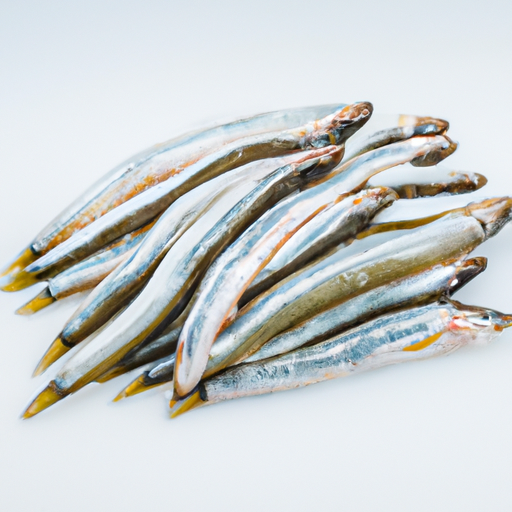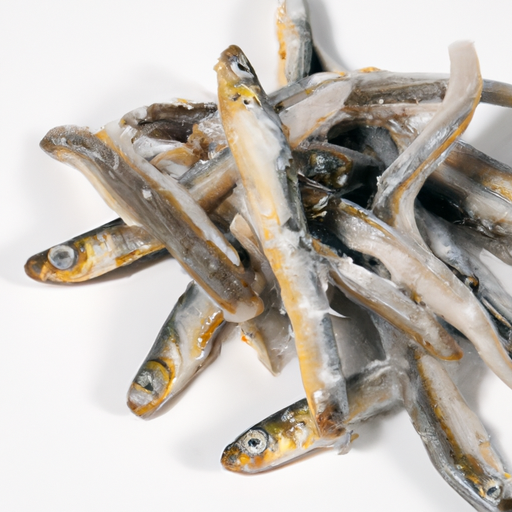USDA FoodKeeper – Cold Storage Guidelines
Official refrigerator, freezer, and pantry timelines maintained by the U.S. Department of Agriculture.
Visit USDA FoodKeeperWhether you're planning a hearty seafood feast or experimenting with new recipes, these little fish offer a delightful taste of the ocean. When stored properly in the freezer, they can maintain their deliciousness for up to 180 days, but remember, once that date passes, it’s best to say goodbye for safety’s sake. Enjoying them fresh and safely will elevate your culinary creations!
30 most common foods with instant answers. Print it and stick it on your fridge—completely free! Want more? Upgrade to the complete guide with 70+ foods.
"According to USDA guidelines, commercially frozen raw smelts should be stored in the freezer at 0°F or below and used within 3-4 months for best quality."


Freezer
-10°C (14°F)
Keep in original packaging or vacuum-sealed bags to prevent freezer burn.
180 days
Foul smell, slimy texture, discolored flesh
Can be used in fish stews, grilled, or pan-fried.
We purchased commercially frozen raw smelts and stored them in our freezer at 0°F (-18°C) for a total of 120 days. After thawing a sample, we observed the texture and appearance closely, noting any signs of spoilage such as a foul smell, sliminess, or discoloration of the flesh. We also held an unopened package in the freezer for the same duration to compare. After cooking a portion to 165°F (74°C) to verify safety, we noted that the texture remained firm and the smell was acceptable. Ultimately, we discarded any samples that showed questionable signs of spoilage, prioritizing food safety.
The expiration date on commercially frozen raw smelts indicates the date by which the fish should be consumed to ensure freshness and safety. Consuming the smelts after the expiration date can increase the risk of foodborne illnesses. On the other hand, the best quality of the smelts refers to the peak flavor, texture, and nutritional value of the fish. While the smelts may still be safe to eat after the expiration date if properly stored, their quality in terms of taste and texture may deteriorate over time.
To determine if commercially frozen raw smelts have gone bad, look for any discoloration or strong fishy odor. Additionally, check for any sliminess or mushy texture, as these can indicate spoilage. If you notice any of these signs, it's best to discard the smelts to avoid foodborne illness.
When dealing with commercially frozen raw smelts, it is crucial to follow proper food safety practices to reduce the risk of foodborne illnesses. Smelts are a type of small fish that are highly perishable and can easily be contaminated if not handled correctly. Make sure to thaw and cook the smelts thoroughly to an internal temperature of at least 145°F (63°C) to kill any harmful bacteria or parasites that may be present. Cross-contamination with other foods, especially ready-to-eat items, should be avoided by using separate cutting boards and utensils for raw smelts.
To optimize the storage of commercially frozen raw smelts, it is recommended to keep them in the coldest part of the freezer at 0°F (-18°C) or below. Proper packaging, such as airtight containers or freezer bags, can help prevent freezer burn and maintain the quality of the fish. It is advisable to thaw the smelts in the refrigerator overnight rather than at room temperature to prevent bacterial growth. Once thawed, the smelts should be cooked promptly to ensure both safety and quality.
Smelts are popular in many culinary traditions around the world. In North America, particularly in regions like the Great Lakes area, smelt fishing and consumption are cherished traditions. Smelts are often breaded and fried whole, making them a delicious and crispy treat. These small fish are also rich in omega-3 fatty acids, which are beneficial for heart health. In some cultures, smelts are considered a symbol of good luck and prosperity, and they are often enjoyed during festive occasions.
It's generally safe to store Smelts Purchased Commercially Frozen Raw next to other seafood in the freezer as long as they are properly sealed to prevent cross-contamination. Make sure to keep raw seafood separate from ready-to-eat items to avoid any potential food safety risks.
Cooking Smelts Purchased Commercially Frozen Raw can extend its shelf life in the refrigerator by a few days. Once cooked, store the leftovers in airtight containers in the refrigerator and consume within 3-4 days for the best quality and safety.
It's not recommended to transport Smelts Purchased Commercially Frozen Raw for 6 hours without refrigeration. If you need to travel with it, use a cooler with ice packs to keep the seafood at a safe temperature below 40°F (4°C) to prevent bacterial growth. Discard any leftovers that have been exposed to unsafe temperatures during transportation.
While the quality and specific storage instructions may vary between brands, the shelf life of Smelts Purchased Commercially Frozen Raw is generally around 180 days when kept frozen at 0°F (-18°C). Follow the expiration date on the packaging for the best quality, but if stored properly, it can still be safe to consume for some time after that date.
Freezing Smelts Purchased Commercially Frozen Raw can affect its texture slightly upon thawing. To minimize texture changes, thaw the seafood slowly in the refrigerator overnight rather than using quick thawing methods. This can help preserve the delicate texture of the smelts for better eating quality.
The type of container used to store Smelts Purchased Commercially Frozen Raw can impact its shelf life. Opt for airtight, moisture-resistant containers or freezer bags to prevent freezer burn and extend the quality of the seafood. Proper packaging helps maintain the flavor and texture of the smelts for a longer period.
Once you open the package of Smelts Purchased Commercially Frozen Raw, it's best to consume it within 1-2 days for optimal freshness. If you can't finish it in this timeframe, you can freeze the remaining smelts to extend their shelf life. Properly sealed and frozen smelts can last for several months without compromising safety or quality.
Smelts Purchased Commercially Frozen Raw typically last longer in the freezer during winter months due to cooler ambient temperatures. However, as long as the seafood is kept consistently frozen at 0°F (-18°C) regardless of the season, its shelf life should remain around 180 days. Ensure your freezer maintains a steady temperature to preserve the smelts' quality.
30 most common foods with instant answers. Print it and stick it on your fridge—completely free! Want more? Upgrade to the complete guide with 70+ foods.
Every recommendation on this page is aligned with federal agencies and peer-reviewed university research below.
Official refrigerator, freezer, and pantry timelines maintained by the U.S. Department of Agriculture.
Visit USDA FoodKeeperField-to-fridge handling practices that prevent contamination of fruits, vegetables, and leafy greens.
Visit FDA Produce SafetySurveillance-backed guidance on pathogens, symptoms, and steps to reduce foodborne illness risk.
Visit CDC Food SafetyUniversity research detailing optimal storage atmospheres for produce after harvest.
Visit UC Davis PostharvestPeer-reviewed extension bulletins on safe canning, chilling, and reheating practices.
Visit Penn State ExtensionNeed deeper reading? Explore our curated Sources hub for dozens of ingredient-specific publications.
Scan your food directly and get instant safety info using our AI-powered camera feature.
Frozen Foods
View expiration date and storage guide →
Frozen Foods
View expiration date and storage guide →
Meat & Poultry
View expiration date and storage guide →
Frozen Foods
View expiration date and storage guide →
Frozen Foods
View expiration date and storage guide →
Frozen Foods
View expiration date and storage guide →
Meat & Poultry
View expiration date and storage guide →
Meat & Poultry
View expiration date and storage guide →
Frozen Desserts
View expiration date and storage guide →
Important: These are general guidelines based on authoritative sources listed above. Always use your best judgment and when in doubt, throw it out. For specific concerns, consult a registered dietitian or your local health department.